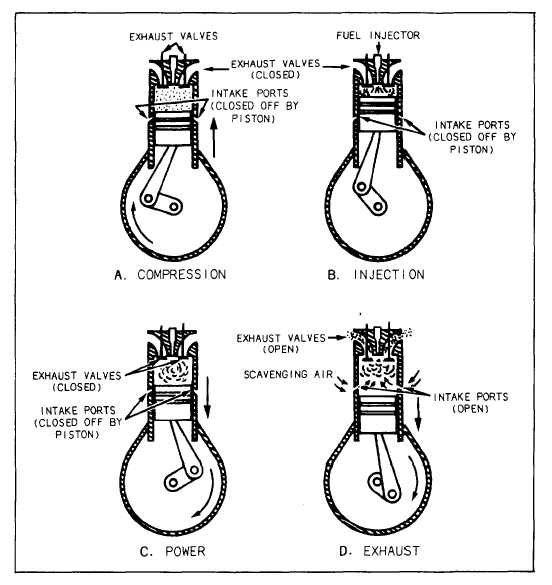Figure 7-5.—Two-stroke diesel engine.
revolution of the crankshaft, or twice as many as
In view C, the piston is moving downward on
in a four-stroke cycle engine.
NOTE: A two-stroke engine does not have
intake valves. It has intake ports (fig. 7-5).
The steps in the operation of a two-stroke
diesel engine are shown in figure 7-5. In view A,
the piston is moving upward on the compression
stroke. The exhaust valve and the intake ports are
closed, and the piston is compressing the air
trapped in the combustion chamber. At the top
of the stroke, with the piston in the position
shown in view B, fuel is injected (sprayed) into
the cylinder and ignited by the hot compressed air.
the power stroke: The exhaust valves are still
closed; and the increased pressure, resulting from
the burning fuel, forces the piston downward and
rotates the crankshaft.
As the piston nears the bottom of the power
stroke (view D), the exhaust valves open and the
piston continues downward to uncover the intake
ports. Air is delivered under pressure by a blower
for two-stroke diesel engines. In a two-stroke
gasoline engine, air comes from the crankcase
through the intake ports; and the burned gases
are carried out through the exhaust valve.
This operation (referred to as scavenging air)
takes place almost instantly and corresponds to
7-6


